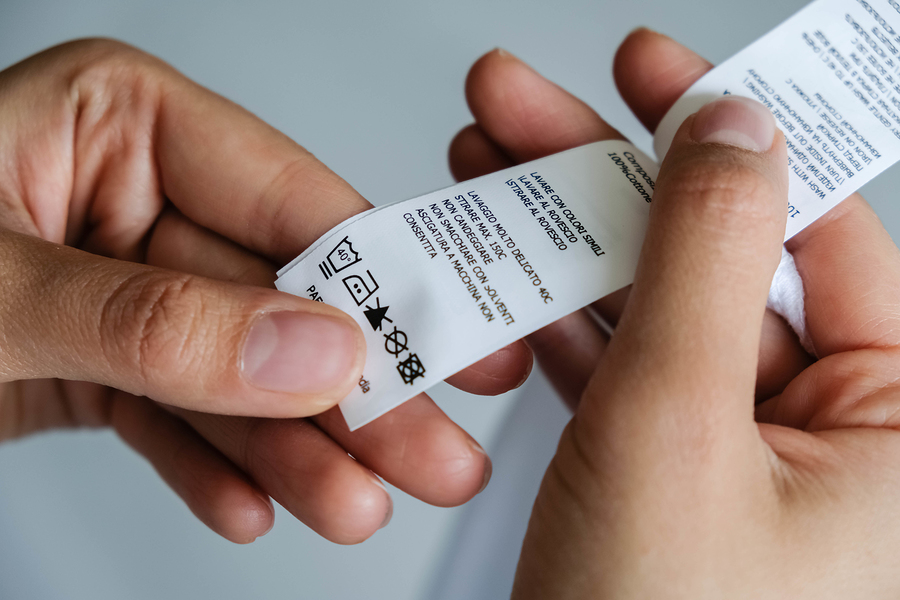If you need to design custom clothing labels, then there is a lot of directions you can go in, each are going to have their own advantages/disadvantages, especially when you are comparing cost vs. quality.
Whether it be something that is sewn onto the fabric or is simply a hang tag designed to be torn off by a shopper, there is a subtle and important artistry to the design of custom clothing labels that is worth studying.
The following will examine some tips you should employ when designing your custom clothing labels.
1. The basic essentials
Of course, when you are designing custom clothing labels, you need to make sure that you meet the basic requirements that most consumers come to expect. These are:
Your brand name: Your business or brand name. Ensure that you include a trademark/copyright symbol if you are registered with one.
Your web address: This is where you should include the URL of your business website. Including “www” may not be necessary if your site redirects without it and will save space/look nicer on your custom clothing label.
Your business number: The phone number consumers can contact your business with. Area/country codes will be necessary when shipping to overseas markets.
Manufacturing ‘made in’ details: There are legal regulations in certain countries that demand you disclaim where the item was manufactured. For example, in Australia, The Australian Consumer Law (ACL) applies. If made locally, you would definitely want to include that fact, as it is a reason someone might choose your item over a competitor who has their products made overseas.
Sizing: This can represent an extra expense since you would need multiple custom clothing labels for each size but can lend more legitimacy to your brand.
2. What about care instructions?
Many fashion brands will include care instruction tags on their products so that consumers know how to make them last and protect their investment. The obvious benefit of this is that consumers will enjoy the product for longer and it is a show of good faith by not hoping they ruin it to buy another.
According to Dutch Label Shop when you are designing custom clothing labels, it can be worthwhile to include care instructions that detail the washing/drying steps necessary to preserve the item’s original quality as long as possible.
Another potentially worthwhile investment during the design of your customer clothing labels is the inclusion of hang tags. These flashy cards are designed to be removed by consumers after they make a purchase but are great at being eye-catching and acting as a small billboard on retail shelves.
A well-constructed hang tag can act as a great way to further legitimise your brand, since most of the big clothing manufacturers you are competing with will use them as well. In the creation of these hang tags, you want to make sure your brand’s logo and colour scheme are prominent so that it become instantly recognizable to repeat consumers and builds valuable mindshare.
4. What material should I use?
This is mainly going to come down to your cost/quality breakdown, as there are a few different material options that you can go with. Some materials you might use for custom clothing labels are going to be more appropriate than others depending on the environment the items are going to be worn in.
Woven: This is the most popular type of material used without any arguments, with the subvariety of ‘woven damask’ being the most widely used option. The soft satin gives a very professional look and feel, although you can go with woven taffeta to save some money at the cost of quality.
Printed: Modern technology allows for finely crafted custom clothing labels to be constructed by digitally printing logos/text onto materials like cotton, Tyvek, polyester, satin and more. This is also the preferred method to construct high-quality hang tags.
PVC: PVC (polyvinyl chloride) is a soft and bendable material that is also great for your product tags. This material is best for items that are designed to be worn outdoors as they are durable against moisture/heat from the outdoors.
Conclusion
As you can see, there’s a lot you need to think about when designing your custom clothing labels so that you can get the best effective use out of them.


